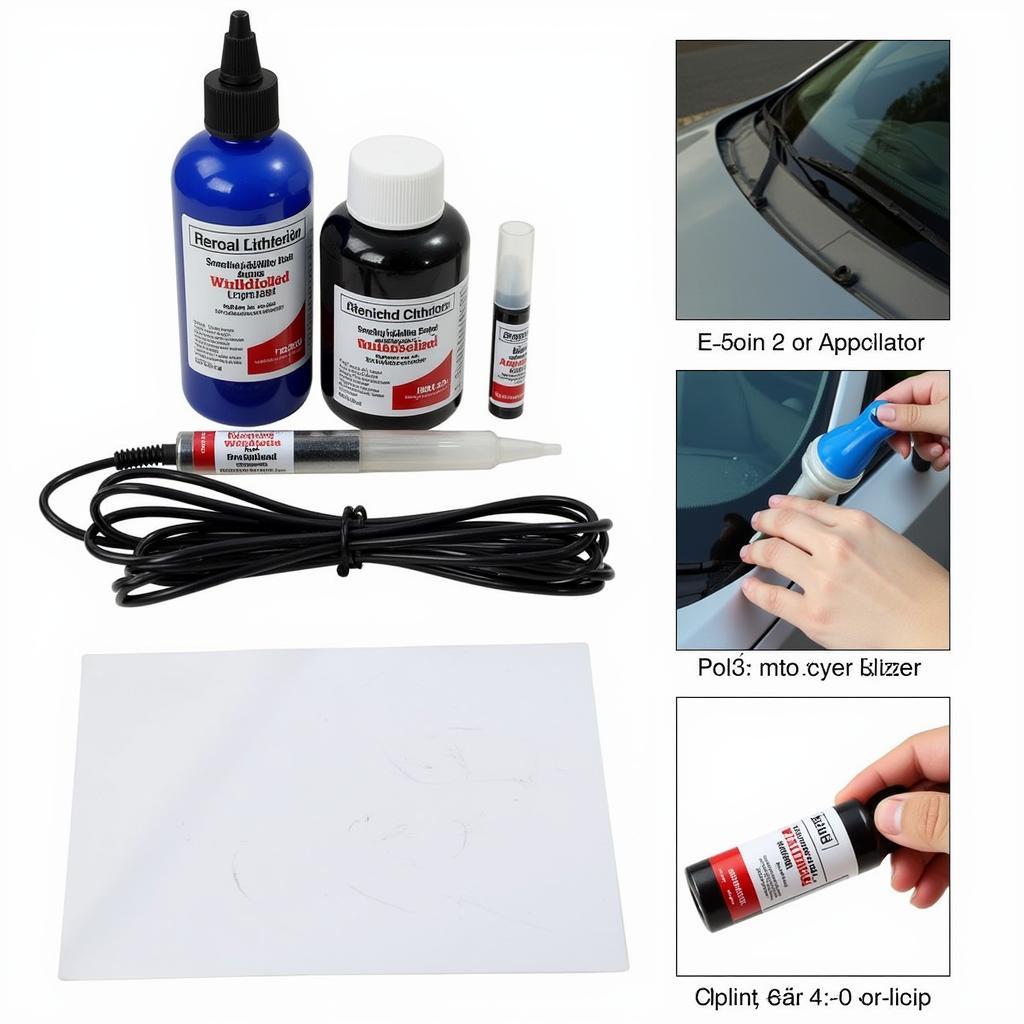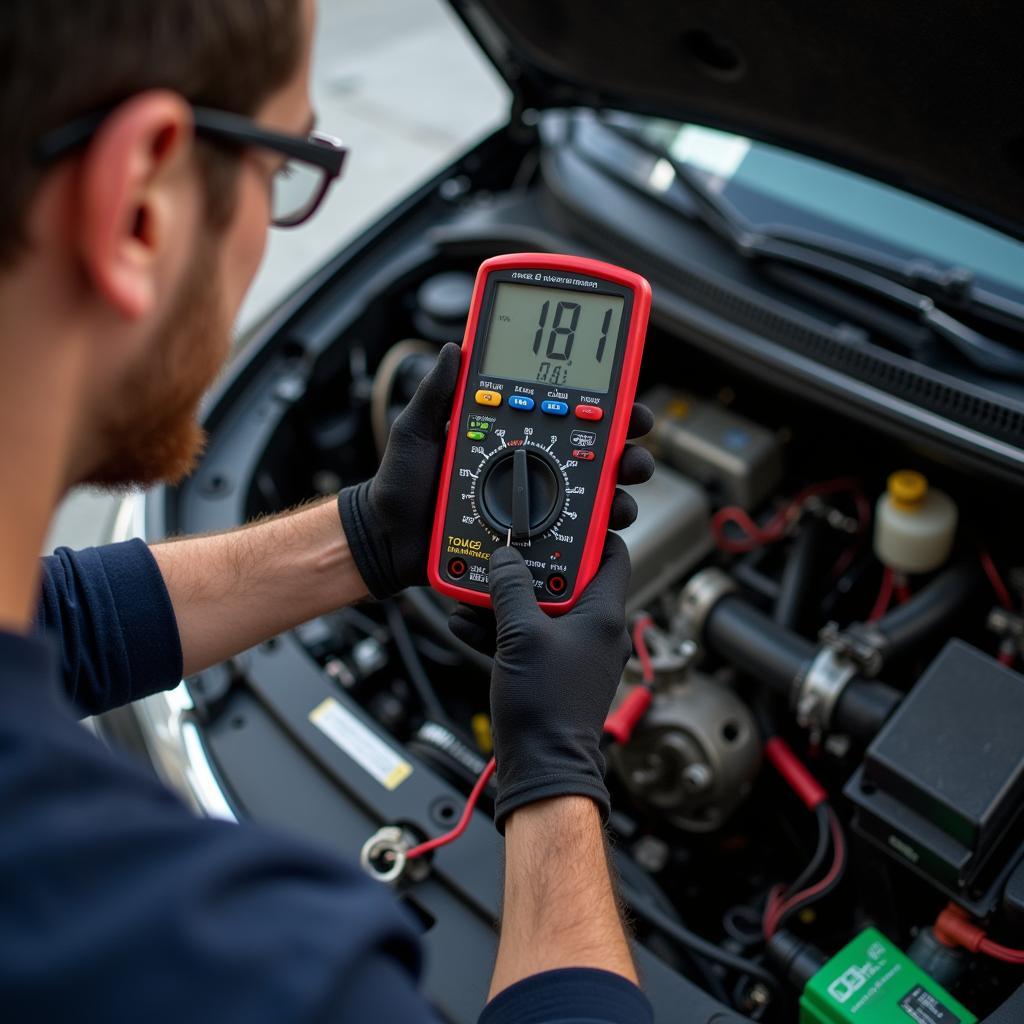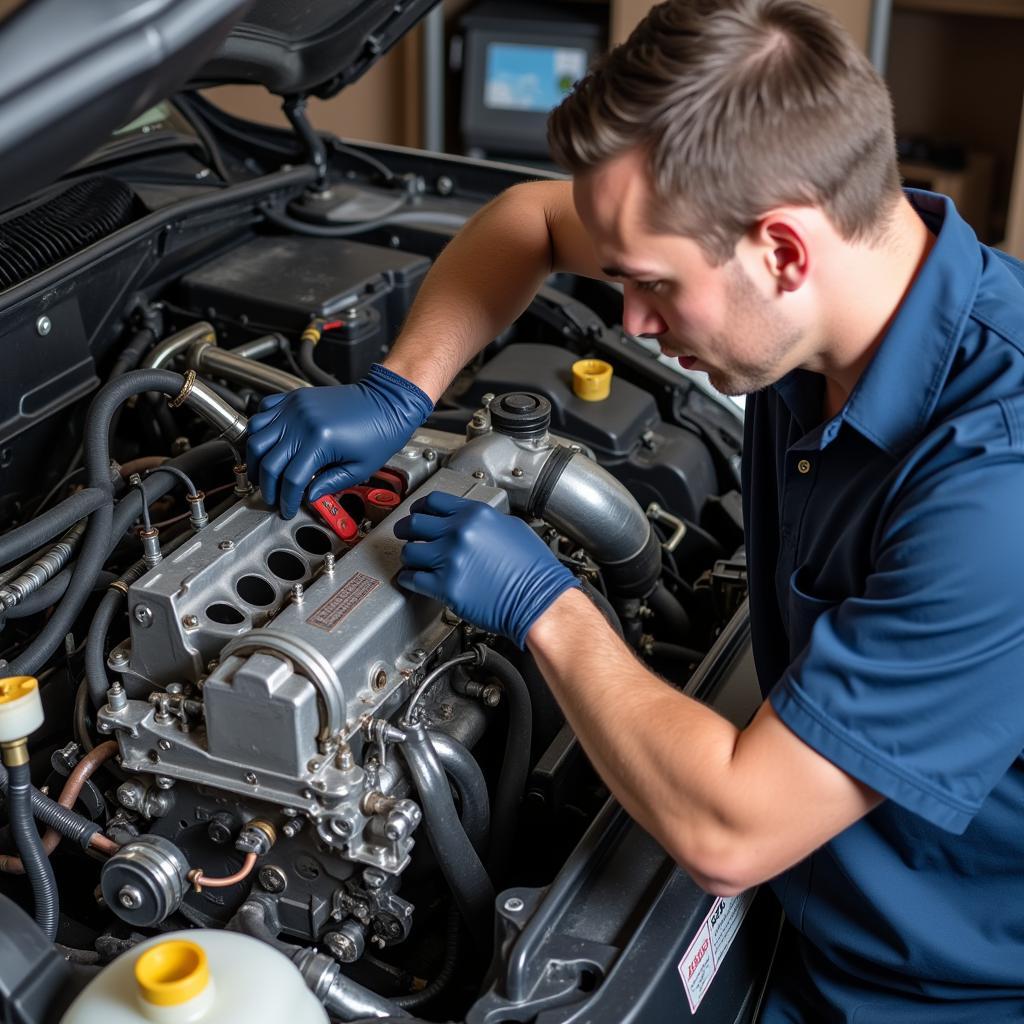Fixing your car undercarriage can seem daunting, but with the right knowledge and tools, many repairs can be tackled at home. This guide will walk you through common undercarriage issues, how to diagnose them, and how to fix them, saving you time and money. Let’s dive in and get your car back in top shape.
Understanding Your Car’s Undercarriage
The undercarriage is more than just the bottom of your car; it’s a complex network of vital components. These include the exhaust system, brakes lines, fuel lines, suspension parts, and the frame itself. Each part plays a crucial role in your vehicle’s performance and safety. Regular inspection and maintenance are key to preventing costly repairs down the road. Neglecting your car’s undercarriage can lead to serious problems, affecting handling, safety, and overall performance.
Common Undercarriage Problems and Solutions
Rust: The Silent Enemy
Rust is a common issue, especially in areas with harsh winters. How to fix undercarriage rust on a car details the steps involved. From surface rust to more serious frame damage, addressing rust promptly is essential. Ignoring rust can lead to structural weakness and ultimately, expensive repairs.
- Surface Rust: Often appears as orange or brown discoloration. You can usually remove this with a wire brush and rust converter.
- Scale Rust: This is a more advanced stage of rust that creates flaking. It requires more aggressive removal methods like sanding or grinding.
- Penetrating Rust: The most severe type, penetrating rust compromises the metal’s integrity. Professional repair is often necessary.
Damaged Exhaust System
A rattling sound or decreased fuel efficiency can indicate exhaust problems. How to fix a broken car muffler guides you through this process. Exhaust leaks can be dangerous, allowing harmful fumes to enter the cabin.
- Holes in the muffler or exhaust pipe: These often require patching or replacement.
- Loose exhaust hangers: These can cause rattling and vibration. Replace worn or broken hangers.
- Cracked catalytic converter: This can impact engine performance and emissions. Replacement is typically necessary.
Brake Line Issues
Soft or spongy brake pedals can signify brake line problems. Leaking brake lines are a serious safety hazard and require immediate attention. Have a professional inspect your brake system if you suspect any issues.
Suspension Component Damage
Worn or damaged suspension components can affect handling and ride comfort. Car damage during road fix provides valuable insights on this topic. Unusual noises, excessive bouncing, or uneven tire wear can all point to suspension problems.
- Worn shocks or struts: These can cause a bouncy ride.
- Damaged control arms: These can affect steering and alignment.
- Broken sway bar links: These can cause excessive body roll.
“Regularly inspecting your car’s undercarriage is like giving it a health check-up. Catching small issues early prevents them from becoming major headaches.” – David Miller, Automotive Engineer
How to Inspect Your Car Undercarriage
- Safety First: Always use safety stands or ramps to lift the vehicle securely. Never work under a car supported only by a jack.
- Clean the Undercarriage: Use a pressure washer or garden hose to remove dirt and debris, making inspection easier.
- Visual Inspection: Look for signs of rust, damage, leaks, or loose components. Pay close attention to areas where components are connected.
- Check for Leaks: Look for any fluids dripping or staining the undercarriage. Identify the source and address the leak promptly.
- Check Exhaust System: Inspect the muffler, pipes, and catalytic converter for holes, rust, or damage.
“A little preventative maintenance goes a long way in preserving your car’s undercarriage and extending its lifespan.” – Sarah Johnson, Automotive Technician
When to Seek Professional Help
While some undercarriage repairs can be done at home, others require specialized tools and expertise. A mechanic fixing cars from under gives you a visual representation of this work. If you’re unsure about any repair, it’s best to consult a qualified mechanic. Safety is paramount when working on your car.
Conclusion
Taking care of your car’s undercarriage is crucial for its longevity, safety, and performance. By understanding the common problems, How To Fix Car Undercarriage issues, and when to seek professional help, you can keep your car running smoothly for years to come. For any assistance or further questions, feel free to contact us at AutoTipPro: +1 (641) 206-8880. Our office is located at 500 N St Mary’s St, San Antonio, TX 78205, United States. We’re here to help!







Leave a Reply